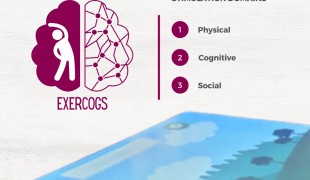- 7775
- 412
- 19
- 17
- 1
- Help Ukraine
About the solution
Ondřej had the idea for this device during a 3D printing lecture at his university. He thought that he could use this technology to produce cheaper and more customized ophthalmic prostheses.
The student presented this idea to his teacher and started working on it, using this topic for his bachelor thesis. “This Bachelor’s thesis deals with a production of a prototype of an eye prosthesis using 3D printing on the base of a model given by scanning of an PMMA handmade prosthesis. The model was modified in a program 3ds Max 2017. The core of the prosthesis with texture was created using this procedure. Additive technology PolyJet and 3D printer Stratasys J750 was used for production. Printed core was covered with biocompatible material to create a biocompatible surface”, says on the document’s abstract.
Using his old ophthalmic prosthesis to start working on this project, the student said the hardest part of making an eye prosthetic is the iris, as it needs to resemble a person’s healthy eye as much as possible. This is another advantage of 3D printing, as it has better results than the conventional methods of manufacturing, and in a reduced amount of time.
According to the inventor, the production of one of this prosthesis takes less than an hour and a half. “Production of an acrylic prosthesis takes around eight hours. While a glass prosthesis can be ready for a patient in two hours, there is no possibility to modify it”, he explained.
Not only it takes less time to develop, it is also cheaper. A typical eye prosthesis costs between $95-$145. Ondřej’s invention costs about $40.
This solution is still a prototype and has not been submitted to any medical tests. The student’s goal is to create an even more efficient and cheaper device that will be able to be easily replaced by another one when necessary.
“When a patient calls for a new prosthesis in two years’ time, he does not even need to ride in,” Vocílka said. “Essentially, just print and send the artificial eye by mail, for example”, Ondřej expressed. He already got an award from Bosh for this innovation.
Adapted from: http://bit.ly/2CjpMqi
This solution shall not include mention to the use of drugs, chemicals or biologicals (including food); invasive devices; offensive, commercial or inherently dangerous content. This solution was not medically validated. Proceed with caution! If you have any doubts, please consult with a health professional.
DISCLAIMER: This story was written by someone who is not the author of the solution, therefore please be advised that, although it was written with the utmost respect for the innovation and the innovator, there can be some incorrect statements. If you find any errors please contact the patient Innovation team via info@patient-innovation.com
-
-
564
-
0
-
4503

Exercogs: an augmented reality and gamification therapy for dementia prevention
Playing
Social interaction
COMMUNICATION: Communicating, whether by speaking, listening, or other means
BODY BALANCE: Maintaining body balance
Dementia (Alcoholic Dementia, Vascular Dementia)
Alzheimer's Disease
Parkinson's Disease
In Person service
Videogame
Tremors
Muscle cramps or spasms
Difficulty coordinating movements
Muscle weakness
Loss of balance
Trouble with fine motor skills (e.g., writing, buttoning clothes)
Cognitive impairment
Memory loss
Numbness or tingling in the extremities
Twitching or involuntary movements (myoclonus)
Acquired language impairment (Aphasia)
Recovering cognitive function
Managing Neurological Disorders
Enhancing Mental Health
Maintaining Balance and Mobility
Preventing (Vaccination, Protection, Falls, Research/Mapping)
Internal Medicine
Neurology
Portugal
-
-
-
575
-
0
-
9592

Cane helps blind people recognize faces
COMMUNICATION: Communicating, whether by speaking, listening, or other means
WALKING WITH A WALKING AID: Walking with a walking aid
Urban exploration
Traveling
Social interaction
Blindness
Assistive Daily Life Device (to help ADL)
Walking Aid (wheelchair/walker/crutches)
Vision problems
Sensitivity to light or sound
Restoring mobility
Promoting self-management
Managing Neurological Disorders
Promoting inclusivity and social integration
Maintaining Balance and Mobility
Improving Speech and Communication
Preventing (Vaccination, Protection, Falls, Research/Mapping)
Neurology
Ophthalmology
United Kingdom
-
-
-
716
-
0
-
10287

3D printed hockey puck for the visually impaired
-
 en
en
PierceCarmelo • Mon, 09/16/2019 - 13:47
I can help you to get some creative ideas. You can go to https://www.cheap55printing.com/24-hours-color-copies-psychology/ and tell them. They will help you with the best idea that is out there.